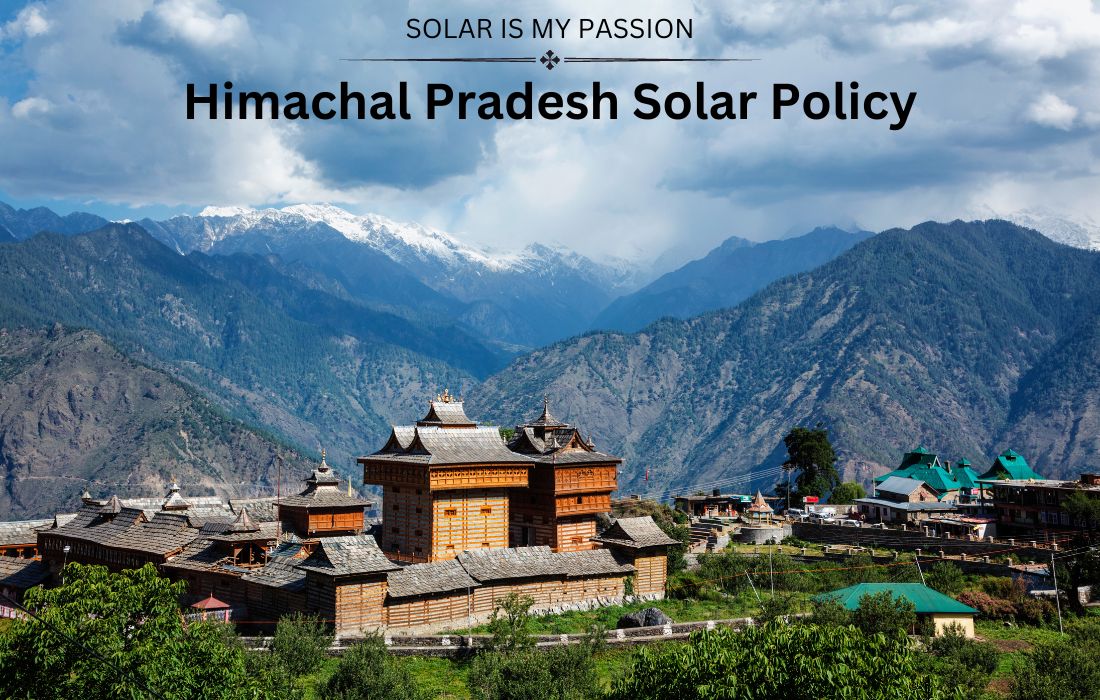(A) Power Supply Scenario in H.P.
(a) Universal electrification and 24×7 power supply for all:
Universal electrification by way of electricity supply to all the households in the entire State of Himachal Pradesh was achieved in 1988, through grid connected network, except in a few isolated locations which were electrified through decentralized mini-grids and off-grid through the Solar P.V. systems. However, consolidation of access to reliable, affordable, and quality electricity is a continuing process, so that supply is in pace with growing needs for access to social and commercial services and technologies for quality of life and overall sustainable development process.
(b) Himachal a Power Surplus State:
The State has a Hydropower potential of about 25,000 MW, including about 2300 MW of Small hydro capacities, categorized as renewal sources. About 10,000 MW capacity is already harnessed and additional 8000 MW capacities are at various stages of development. The present level of net annual consumption (net of T&D losses) is about 8500 MUs and the peak requirement is about 1400 MW. Himachal Pradesh State Electricity Board Ltd. (HPSEBL) has adequate long-term committed supplies available; from its own Stations, CPSU stations, State Govt. Generation Company (HPPCL) sources, State Govt. equity share in Joint Sector projects and free power from hydel projects and shall remain surplus even in foreseeable long term future.
(c) 100% Clean Electricity consumption in Himachal: The State has embarked upon 100% clean electricity policy and accordingly since 2014-15, the HPSEBL is meeting its 100% requirement from hydel sources, with a small quantum from nuclear and solar, mainly from Centre Govt. sources. The state has shares in coal and gas based power plants of the NTPC and this quantum is available over and above its annual requirement and hence these are either surrendered or traded, so that net requirement for consumption is met from clean sources, including renewables.
(d) Solar the most viable option to supplement Hydro:
While the State’s own requirement shall be met from clean sources in line with Policy of sustainable development, it is prudent to have energy mix instead of single source and hence coal and gas based sources should be substituted with clean and renewable sources, which are relatively firmer as base load, for reliability and security. Among the R.E. technologies, Solar is the best option.
(B) Merits of Solar Power in Himachal Pradesh:
(a) Hydropower, particularly small hydro as Renewable Energy (RE), has a limited potential where as solar has unlimited potential.
(b) Solar is more perennial and equitably distributed across the State, unlike hydel.
(c) In hills, grid reliability is a constraint due to geographical, topographical and climate constraints and decentralized generation from solar is more efficient and easy to access.
(d) Solar is much firmer and more efficient and complements hydro. Impounding water in hydel projects during day for peaking power will help load management.
(e) No environmental impact during construction and operation.
(f) Low gestation period of 18 to 24 months and also reduced cost with technology upgrade is leading to tariff parity with hydel over time.
(C) Solar power potential. The National Institute of Solar Energy (NISE) has estimated a potential of 34 GW taking into account 3% of the total wasteland and rooftop surface areas of the consumers for this purpose. IREDA has estimated a potential of about 53 GW taking into account 5% of the wasteland. Therefore, the State has huge solar power potential.
(D) RPPO obligation:
State Electricity Regulatory Commission (HPERC) has prescribed a long-term Renewable Power Purchase Obligation (RPPO), in line with National Action Plan on Climate Change (NAPCC), under which by 2022 the HPSEBL has to purchase at least 19% of electricity including 3% from solar source of total energy consumption, from renewable sources, as against 17% under NAPCC. Energy available from nonsolar (SHP) sources is already more than RPPO but against solar RPPO, State requires about 250 MW capacities whereas presently a long-term source of supply available from CPSUs is about 35 MW. To align the State’s target with the National target of 100 GW, we should require about 700 MW capacities to be created by 2022.
(E) Need for Solar Policy Revision:-
The State Govt. had formulated its Solar Power Policy, which was notified on March 4, 2014. The Govt. of India has up scaled the capacity target from 20,000 MW to 1,00,000 MW (100 GW) to be achieved by 2022, of which 40 GW is planned through rooftop mode. While there is sufficient generation of RE through SHPs, it is desirable to align State’s target also with the national target. This is a great challenge. Private initiative, which is the prime mover, has not been encouraging so far. The HPSEBL can achieve its RPPO by purchasing power from outside the State and also by purchasing Renewable Energy Certificates (REC). The objective of energy security and sustainability can be achieved only if the abundant potential available in the State is harnessed in the State itself. This will add efficiency, quality and equitable access in the electricity supply system. The benefits of investments like jobs, incomes, revenue etc. will also be available. To achieve these objectives and in time, there is a need to create an investment climate where doing gassiness in the State is easy and the investment is safe and profitable. In view of this, policy revision is required, wherein investment in solar projects are treated like industrial project investments; where the Govt. partners in development by facilitating statutory clearances and committing administrative supports and consents in a time-bound manner.
The Govt. of H.P, therefore, considers it prudent to revise its Solar Power Policy of March 4, 2014 and accordingly decides to issue the revised Solar Power Policy as hereunder:-
Himachal Pradesh Solar Policy 2016:-
1. This Policy shall be known as H.P. Solar Power Policy-2016.
2. This shall be applicable to Solar Photovoltaic (PV) technology. However, with the efficiency in Solar Thermal and other solar technologies growing and their relevance to the State in the context of competitiveness with Solar PV and SHPs, State may consider these technologies in due course.
3. This policy is valid up to 31.03.2022, unless modified or extended.
4. Aims and Objectives of the Policy are as under:-
(i) Promote the generation of electricity from solar energy for energy security for sustainable development, which is the core Development Policy of the State.
(ii) Contribute to the National objective of increasing the share of Renewable Energy in total energy consumption, in accordance with climate, environment and macroeconomic considerations.
(iii) Strengthen and sustain the Policy of 100% clean electricity consumption in the State, by providing a suitable alternative to coal and gas-based power and providing firm baseload power during the sunshine time of the day, so that water in the hydro projects are impounded during day time for peaking power.
(iv) Empower people in remote and rural areas with 24×7 power by way of decentralized solar power supply, especially in the unreliable grid systems in the mountains, to meet their basic needs, enable access to social and commercial services, and technologies
(v) Contribute to macro policies and strategies on climate change, environment protection and sustainable development.
(vi) Promote investment, mainly private, so as to derive benefits of jobs, incomes, revenues and growth.
(vii) Facilitate achieving RPPO by capacity creation in the State.
(viii) Create awareness about the potentials of renewable energy, especially solar, as a source of reliable, affordable and accessible energy in a decentralized manner, so that efficient use of electricity becomes a way of life, eventually even for cooking needs and transportation needs to power automobiles.
Discom links are below:


